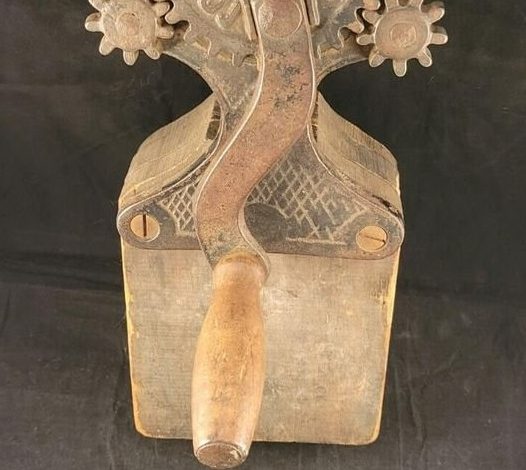
ADVERTISEMENT
A Very Practical Tool from the Last Century
History, Uses and Heritage of Vintage Mechanical Rope Benders
History
Mechanical rope benders or rope making machines have been around since ancient times when durable ropes were important in transportation and construction. agriculture. Early rope making was manual and labor intensive as the fibers were spun by hand. The invention of steel cable revolutionized operations.
These machines first appeared in the 18th century during the Industrial Revolution. Originally hand- or foot-operated and later powered by a parking engine, these machines greatly increased productivity and consistency in rope making. The need for ropes in maritime and industrial applications led to their development. Innovators such as Charles Spencer and John Boyd Dunlop made significant advances in the 19th century.
Applications
The rope machine spins monofilament ropes such as hemp, cotton or sisal; the ropes are woven together. The basic method uses large amounts of fiber fed into a machine. Bending the metal or material twists the fibers together to form a rope of the same weight and strength.
The process begins with the preparation, sizing and bonding of the fiber. These fibers are then fed into a twisting machine, which can produce yarns of different sizes and lengths depending on the shape of the machine. The rope is blown by the wind or cut to a specific length for use.
ADVERTISEMENT
These machines were important in various industries:
Maritime industry: supply of ropes for sailing, fishing and mooring boats.
Construction: Supply of ropes for lifting, hoisting and storage equipment.
Agriculture: Rope making and tying.
Military: Shipbuilding and military technology.
Legacy The
Vintage mechanical cable car has had a lasting impact on technology and industry. They enabled high productivity and set standards for cable strength and durability that are still valid today.
In modern times, synthetic fibers and advanced machines have largely replaced the traditional method, but vintage sewing machines are still popular due to their historical significance and technical expertise. Museum collectors keep these machines as exhibits that showcase the evolution of industrial technology.
The principles of mechanical cable straightening continue to influence current practices. The fit and performance of vintage machines set the standards that modern machines strive to achieve.
Additionally, vintage sewing machine conversions create a wonderful community of crafters and hobbyists dedicated to making traditional sewing machines. They are passionate about pursuing the craft, often using restored vintage machinery to produce vintage, handmade and bespoke bracelets.
ADVERTISEMENT
In conclusion, the history of mechanical engineering demonstrates man’s ingenuity in solving practical problems through mechanical engineering. Their use in various industries underlines their importance in the development of modern industries. The legacy of these machines lives on and is celebrated by historians and modern craftsmen who recognize their contribution to the development of rope.




